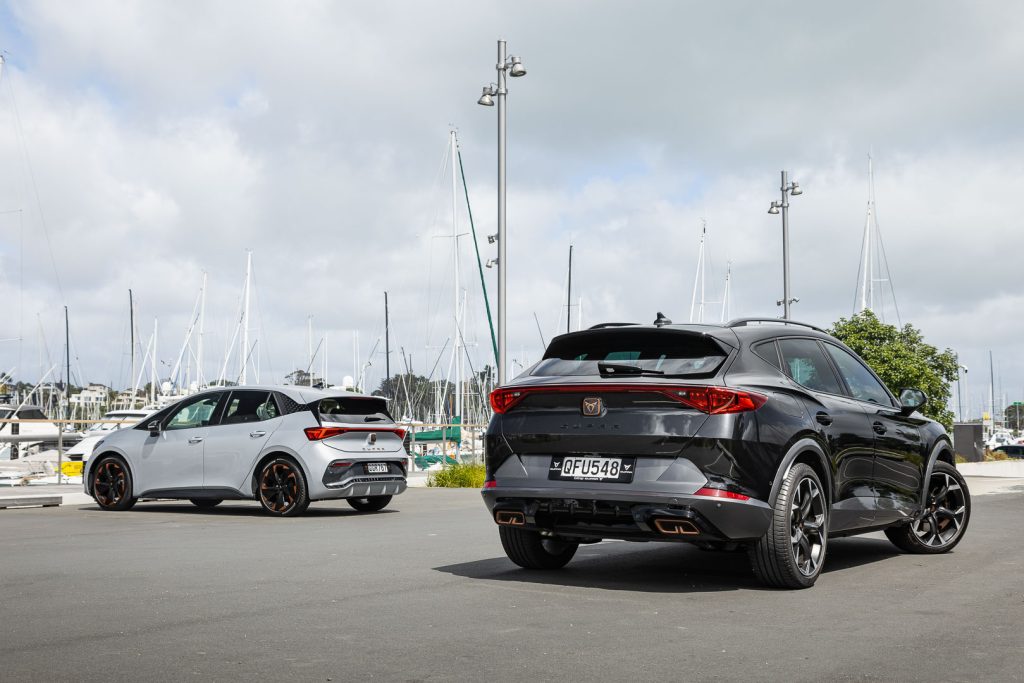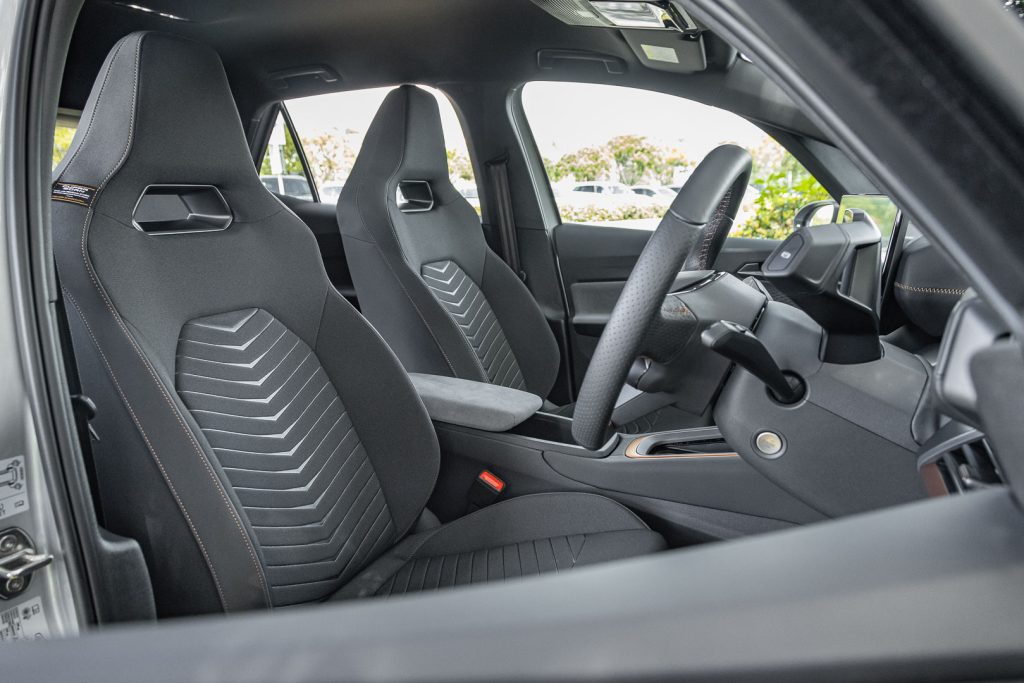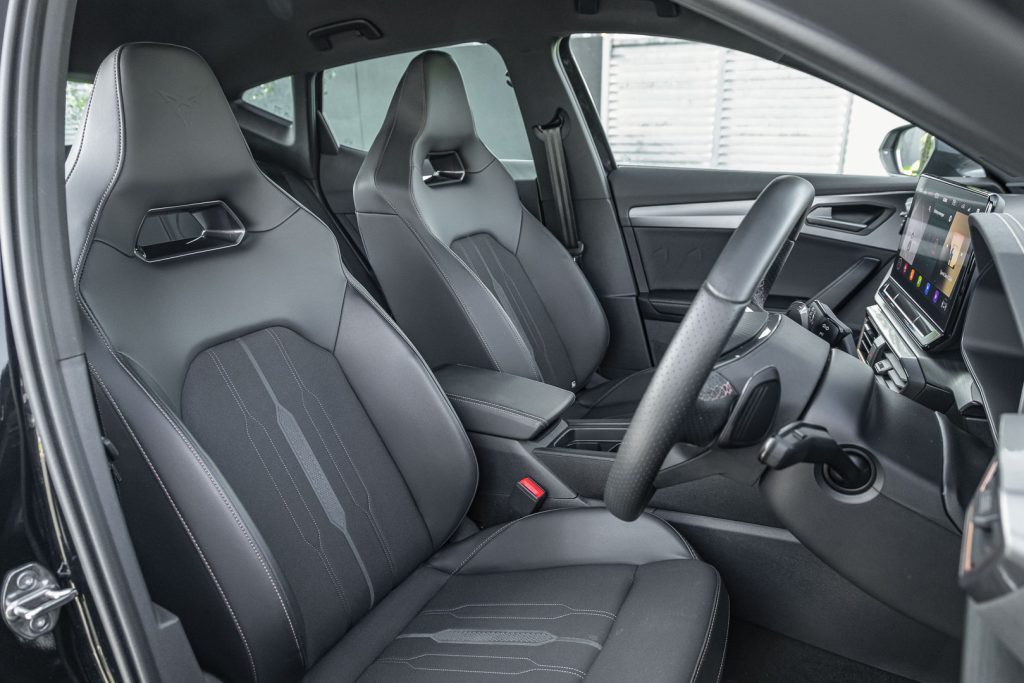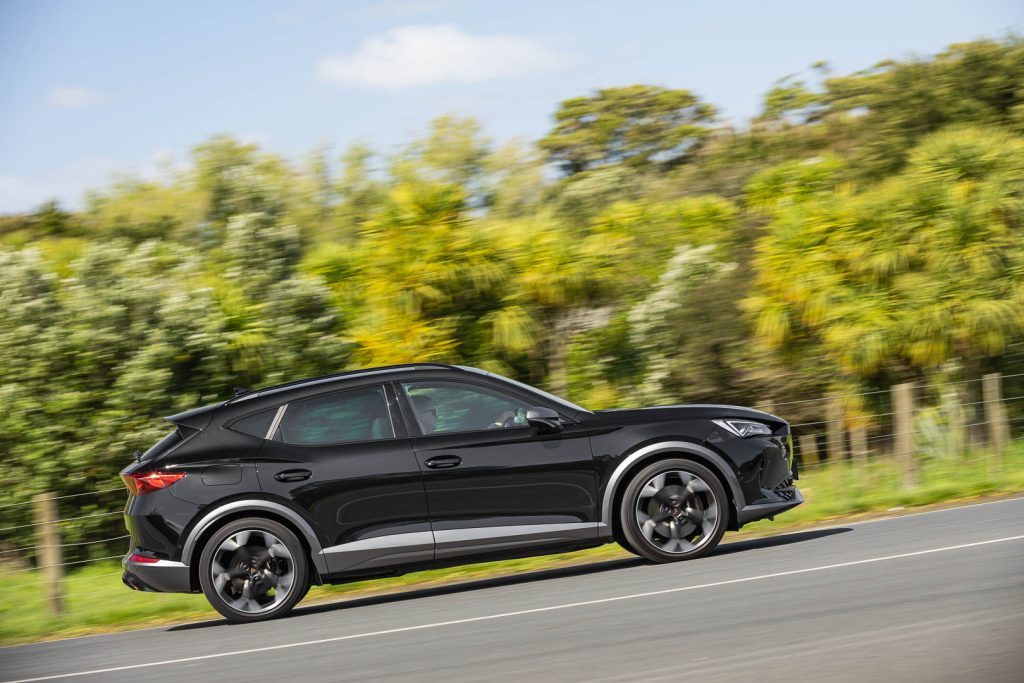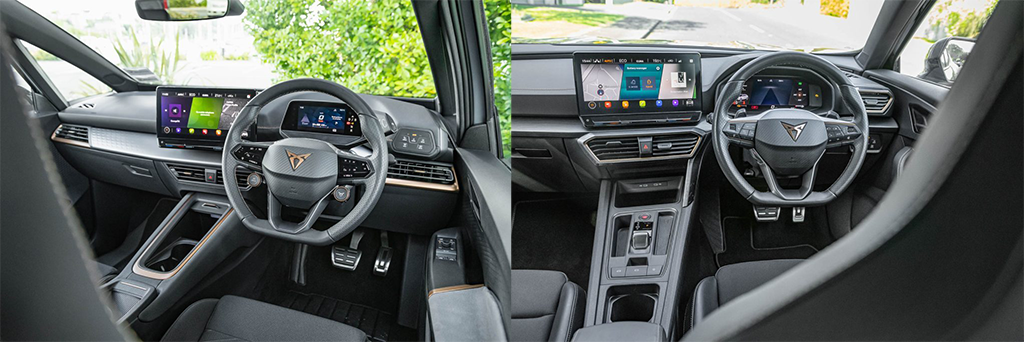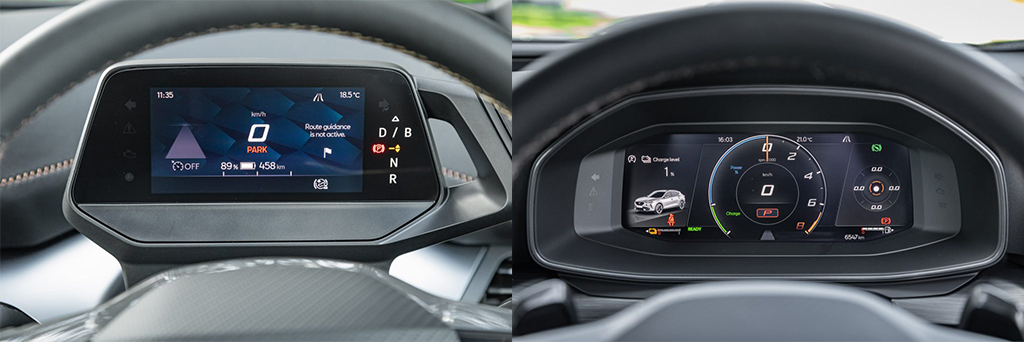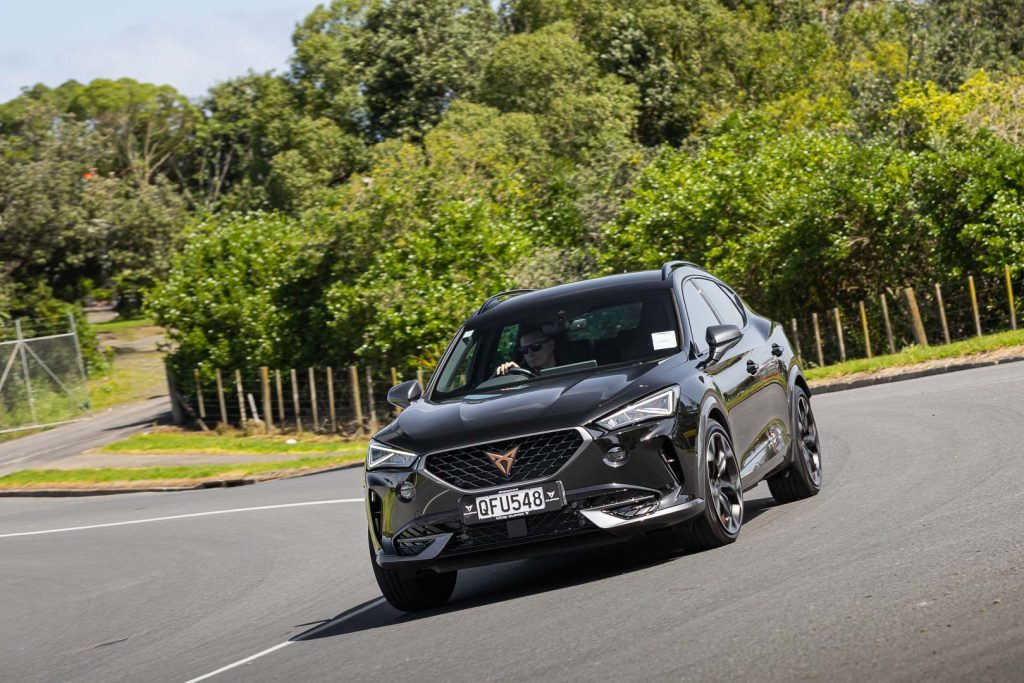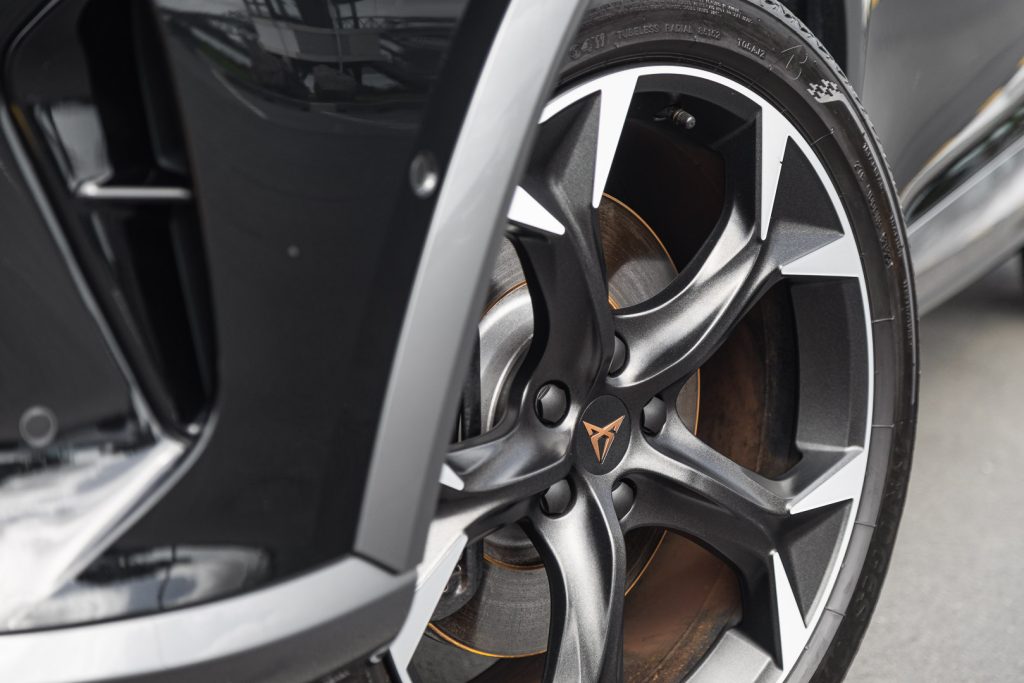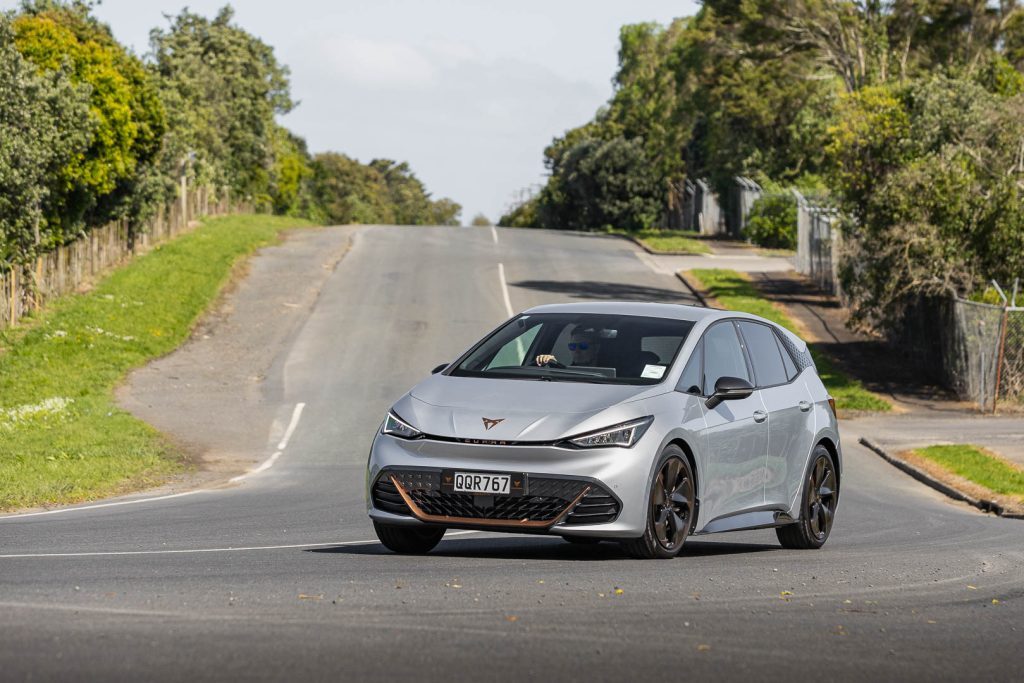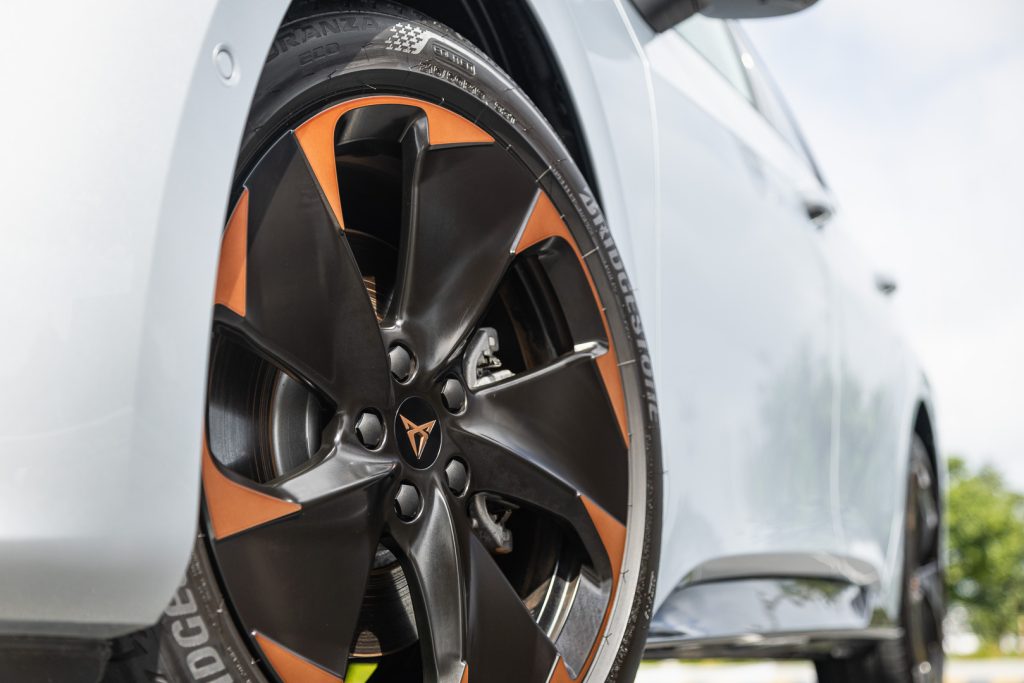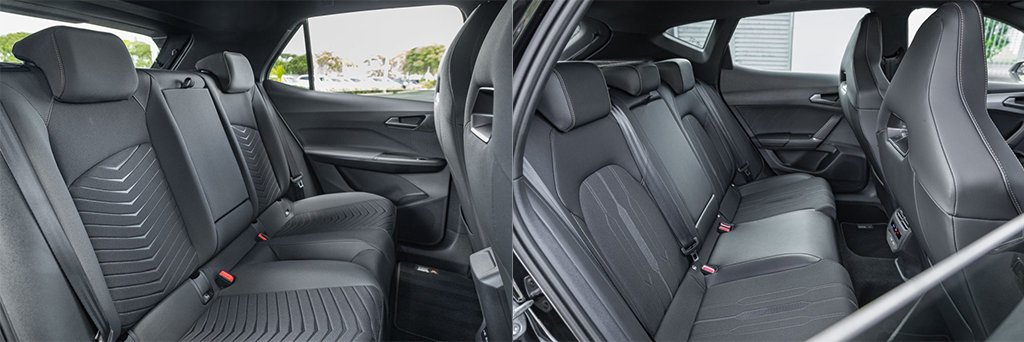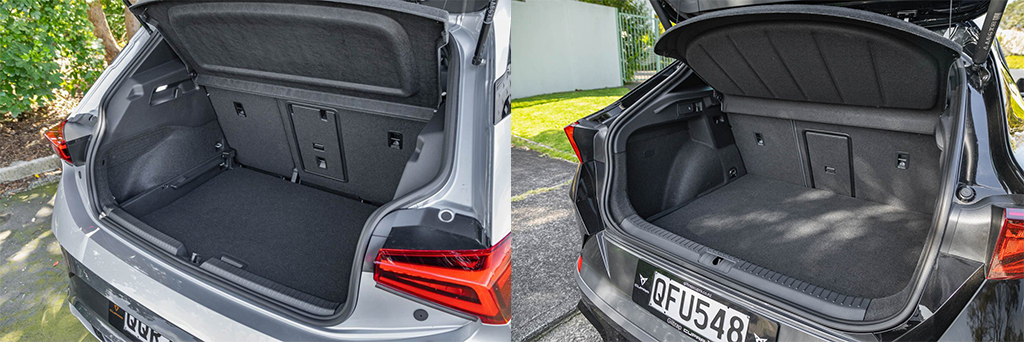2024 Cupra Born EV & Formentor V PHEV comparison review
The Cupra Born V+ and Formentor V e-Hybrid offer dynamic and clean driving. But which is better?

So, you are thinking about going electric but still have a few qualms around range and charging infrastructure. And what will your cronies think?
You may wonder if a plug-in hybrid is the better option. We’ve got this pair together to compare and contrast the different technologies.
Both are Cupras, one is the all-electric Born, the other is the plug-in hybrid Formentor. So, which is better?
We’re not sure that there is a definitive answer; it will come down to your individual needs and, to a larger extent, your personal preference. Other factors to consider include costs and your driving habits.
For the uninitiated, the EV Born has a battery and motor and runs exclusively on electrical energy, with no tailpipe emissions. The Formentor PHEV also has a battery and motor but it’s paired with an ICE engine.
The main difference is the PHEV has a smaller battery and less electric range. The idea is you can complete most of your daily driving needs on the electric side of things, recharging every night to do it all again the next day.
And when, on occasion, you need to travel further afield, the car can operate in hybrid mode.
The petrol engine will get you there, without worrying about recharging, but emitting the usual CO2 and other nasties in the process.
How do these compare on paper?
When mulling between a PHEV and EV, the difference in cost isn’t such an issue as it can be when comparing an EV with an ICE machine.
Conveniently, these two are currently asking the same money; $64,990 plus on roads. That may change in the coming months with the Formentor facelift while EV pricing seems to fluctuate daily.
The Cupra Born has a single electric motor on the rear axle outputting 170kW and 310Nm. The Formentor e-Hybrid has a combined output of 180kW and 400Nm.
With a sufficiently charged battery, it will motor around in EV mode thanks to an 85kW/330Nm electric motor. On the engine side of things is a four-cylinder 1.4 turbo with 110kW and 250Nm.
Both of these power units run via a six-speed twin-clutch transmission, driving the front wheels.
For size, there’s not much between them. Born measures up at 4324mm long and is 1809mm wide, the Formentor is a little bigger at 4450mm long and 1839mm wide.
There is a difference in weight, the smaller car tipping in at 1935kg, though the Formentor is no lightweight at 1735kg. The conventional Formentor V is 1463kg. Electric bits add weight.
The Formentor can tow with a maximum rating of 1500kg, which is, er, 1500kg more than the Born.
What about charging?
The Born has a big 77kWh battery, and a maximum range quoted at 548km. But many factors influence your ultimate travelling distance.
The Formentor has a 12.8kWh battery and can do ‘up to’ 54km in EV mode (more like 45km).
For the benefit of EV newbies, the vast majority of charging you do at home. If that’s not something you can do easily at your place, an electric car is not for you.
Using the home charger, it would take 37 hours to recharge the Born when flat, so you might want to think about the AC wallbox, which could get it done in 7.5 hours.
Realistically you charge every couple of days, something that can be done with the supplied home charger. The PHEV is easily replenished overnight (seven hours), ready to go the next day.
When ranging further afield, the Born can take on as much 170kW at a fast DC charger, 5-80 per cent taking 30 minutes.
You can’t charge the Formentor at a DC pump, but you can easily refill it with petrol in about two minutes.
When it comes to costs, the cheapest charging is done at home, while rates at a DC charger can be up to four times higher. For the PHEV, you’ll want to maximise your EV mileage to keep running costs and emissions down.
While officially the fuel use figure is a lowly 1.3L/100km, this is an anomaly of the testing regime. Once in hybrid mode, your Formentor will be chowing back on gas at a rate of at least 6.5L/100km.
And you’ll be paying double road tax. While PHEVs pay a lower RUC rate of $32 per 1000km (EVs $76) when in hybrid mode, you are using gas (which is taxed at the pump) and paying RUCs.
Each has the option of the Cupra Care package at the time of purchase, covering your scheduled maintenance for the first three years/45,000km and the EV is cheaper, costing $990 vs $1450 for the PHEV.
Each comes with a five-year 100,000 km warranty while the battery packs are covered for eight years/160,000km.
Dynamic charges
Choosing either of these Cupras will see you drive something that is better for local air quality without having to drive something that is boring. And if driver interaction is key for you, the Formentor has the edge.
This is one of our favourite drives in the segment. Obviously the storming VZ is the ultimate athletic champ, but this hybrid still goes hard. It steers sweetly, with a good response and feel.
The way it turns is sure to elicit a grin, and the rear can be playful too. It’s resistant to push and has great grip.
Dynamic support comes in the form of adaptive dampers while flicking on the little gear lever puts you in Sport mode; just perfect for a few twisties in terms of powertrain response and chassis control.
The hybrid powertrain will still deliver you an electric boost under full throttle when the battery charge no longer supports full EV mode. It’s enough to get the traction control roused, as the front wheels try to deploy it all.
You can flap the trans along if you desire, and rev the engine out. And while it’s only a run of the mill four pot, to some ears that is better than the whirring of a motor.
The brakes are solid, and the usual motor regeneration gremlins don’t foul the feel here.
The Born is a dynamic little ‘lectric larrikin. It’s nimble and quick on the turn. However, up against the formidable Formentor, the Born’s steering is lighter, and light on feedback.
As it runs skinnier tyres to help with range, it scrubs that rubber more easily when forcing the issue. And the stability control will step in to sort out the weight transfer in the rear as it rounds off the corners.
It’s more of a digital experience, the ones and zeros finessing it along whereas you can appreciate the chassis dynamics of the Formentor, a more entertaining drive.
Urban warriors
EVs are a better urban drive. With more abundant urge, the Born feels properly brisk. It has that genuine instant go, whereas the Formentor PHEV in its EV mode isn’t nearly as peppy.
It is smooth and quiet however. But just not as slick as the full EV. While both have a claimed 0-100 time of seven seconds, the Formentor needs to be in hybrid mode to attain that speed.
Both are practical operators, the Born perhaps a little more so. It’s space efficient, the seat set higher up, easing entry. It has a tad more leg room in the rear while its boot is a little larger too.
While this Born only had two seats in the rear, it can be had with three.
It has a few EV quirks; it’s on and ready as soon as you step in, the gear selector is column mounted, and you also use it to access the B mode, which adds motor regen to slow you when you lift off the go pedal.
Formentor follows convention with its cabin layout, you can get a bit lower with the driving position and it has a start button while the gear selector is in the usual place.
The quality feels better too, the Born cabin with more plastic about it.
So which will suit you?
The Born will suit urbanites, as it’s the better city car. With its generous battery pack, it’s also an EV that can whisk you to the bach and back.
The Formentor is the one for those who don’t want to give up on combustion just yet, but like the idea of EV running around town, and not having to worry about public charging.
That we found ourselves wanting to drive the Formentor more is perhaps telling.
Cupra Formentor V e-Hybrid PHEV
Model
Cupra Formentor V e-Hybrid PHEV
Price
$64,990
Engine
1395cc, IL4, T, DI
Power
110kW @ 5000-6000rpm
Torque
250Nm @ 1500-3500rpm
Hybrid Output
180kW / 400Nm
Drivetrain
6-speed twin-clutch, FWD
Turning circle
11.4m (2.1 turns)
Fuel Use
1.3L/100km
C02 Output
33g/km
0-100km/h
6.15 sec
Tyre Size
f/r-245/40/R19
Fuel Capacity
40L
Stability systems
ABS, ESP, TV
Safety
AEB, ACC, BSM, LDW, RCTA, ALK, AHB
Luggage Capacity
345-1415L
Tow rating
750kg (1500kg braked)
Service intervals
12 months/15,000km
Warranty
5 years/100,000km
ANCAP rating
5 Stars (2012)
Weight
1735kg (claimed)
Cupra Born V+
Model
Cupra Born V+
Price
$64,990
Motor
170kW
Battery
77kWh
Range
511km
Drivetrain
Single-speed auto, RWD
Energy Use
17kWh/100km
C02 Output
0g/km
0-100km/h
6.69sec
80-120km/h
4.54sec (129.3m)
100-0km/h
33.77m
Stability systems
ABS, ESP
Safety
AEB, ACC, BSM, LDW,
RCTA, ALK, AHB
Luggage capacity
385L
Tow rating
Not rated to tow
Service intervals
12 months, 20,000km
Warranty
5yrs, 100,000km
ANCAP rating
5 Stars (2023)
Weight
1875kg (claimed)
This article first appeared in theAlso consider
